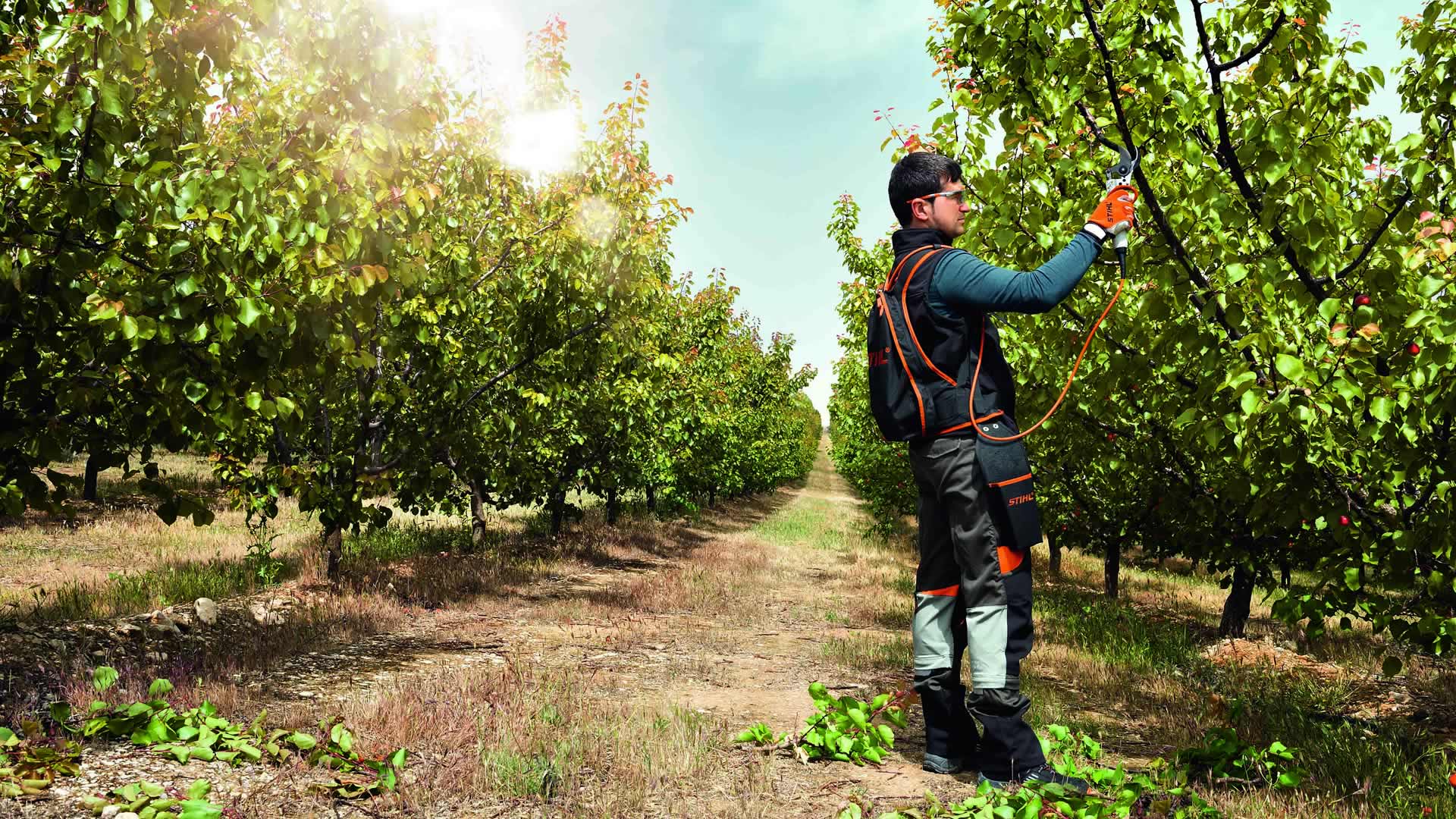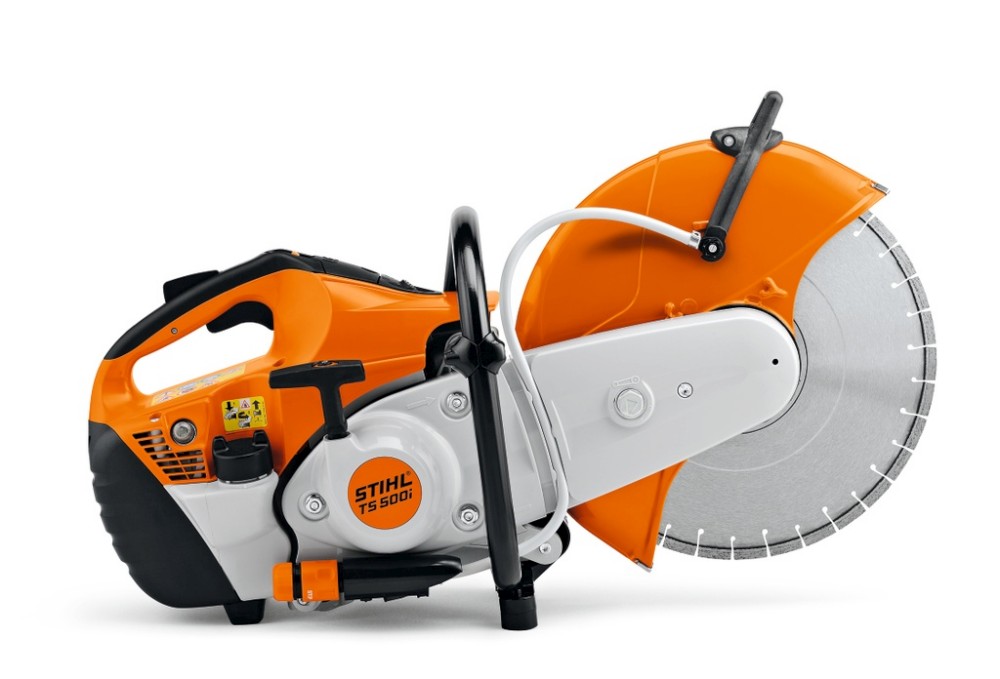Tensioning the Chain Correctly
Tensioning the chain regularly not only enhances the safety of the operator, but also reduces the amount of chain wear and damage. The chain tension should be checked before starting work and corrected if necessary. The chain heats up, even when working with a chainsaw, and becomes slightly longer in the process, with the result that it must be retensioned from time to time. STIHL chains are automatically "stretched" after roduction in order to prevent excessive lengthening.
How to tension your chain correctly:
Most STIHL chainsaws have a user-friendly chain tensioner at the side (see Fig. 1), with which the chain can be tensioned in a flash:
When the engine is switched off, simply undo the screws securing the sprocket cover, then tighten the tensioning screw with a screwdriver and carefully pull the chain through by hand.
Always wear gloves in order to avoid all risk of injury on the sharp chain (Fig. 4). The chain is correctly tensioned when it does not sag on the underside of the bar but can still be pulled through without difficulty (Fig. 3+4).
1. The user-friendly lateral chain tensioner from STIHL
2. Convenient and does not require tools: the Quick Chain Tensioner from STIHL
3. This chain is still too loose
4. A correctly tensioned cold chain
STIHL also supplies chainsaws equipped with the convenient Quick Chain Tensioner (Fig.2). The chain on these machines can be tensioned quickly and easily - without any tools at all. Simply undo the wing nut securing the sprocket cover by hand. The chain is relaxed by turning the adjusting wheel above to the left and tensioned by turning it to the right. The guide bar is secured automatically when the sprocket cover is tightened.
Before fitting a new chain, the groove in the guide bar should be thoroughly cleaned to remove all dirt, otherwise the chain can easily jump off the bar, particularly if the groove is very dirty. Moreover, the chain lubricant may be absorbed by the dirt instead of reaching the particularly stressed underside of the bar, with the result that the chain and bar heat up strongly and wear out rapidly. A thin screwdriver or other sharp implement is ideal for scraping the dirt out of the groove.
Always "run in" the new chain for a few seconds before starting to cut through wood.
Important: Since the chain contracts slightly when it cools, it should never be tensioned or changed while warm. This could lead to serious problems with the guide bar or crankshaft. It is advisable to relax the chain slightly after use, particularly in frosty weather.


